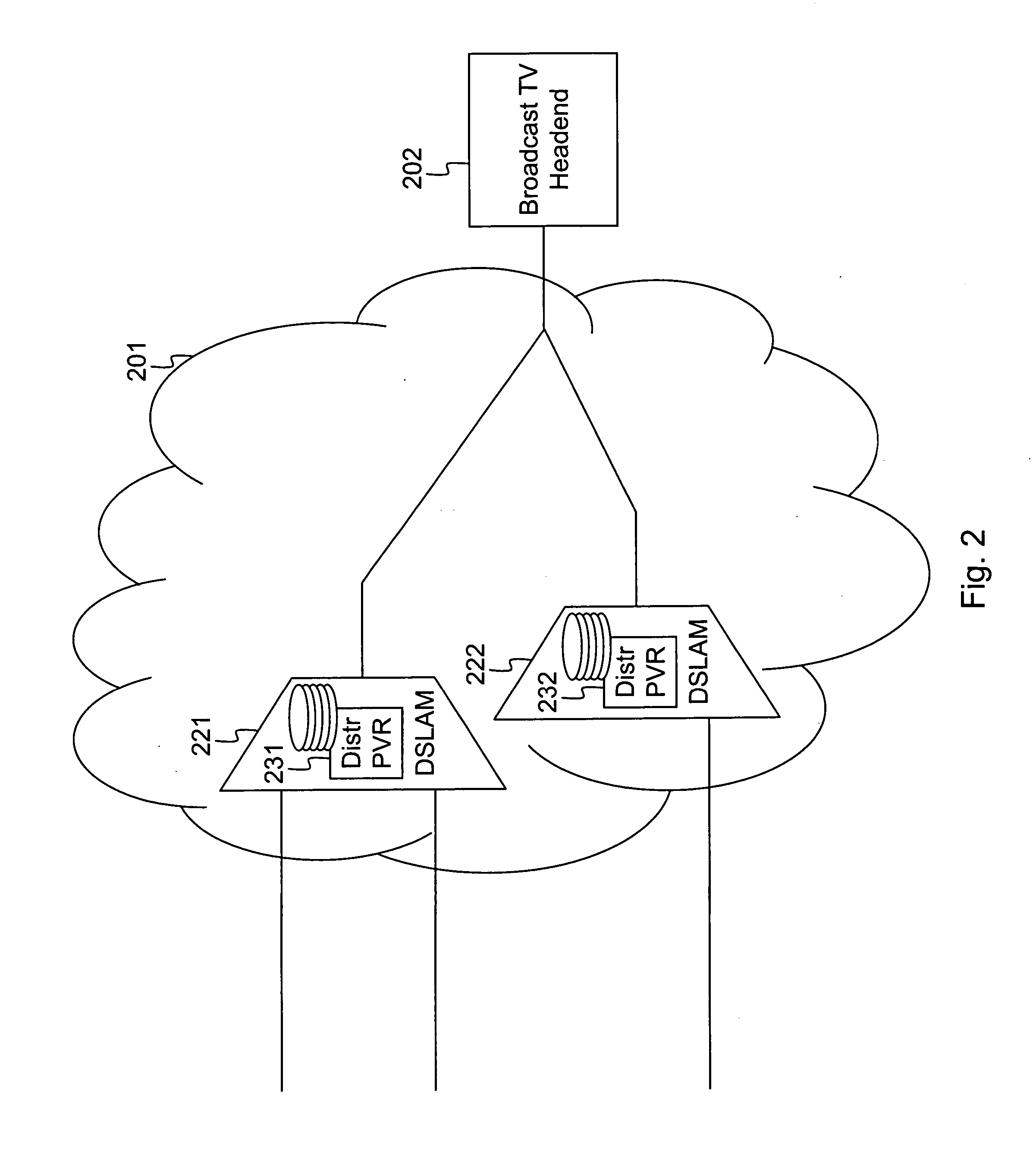Access/edge node supporting multiple video streaming services using a single request protocol
a video streaming and access node technology, applied in closed circuit television systems, television systems, analog secracy/subscription systems, etc., can solve the problems of inability to record more than a few programmes or tv channels simultaneously, and inability to control the video control platform and logic. , to achieve the effect of tight integration of video control platforms and logic, saving management overhead and bandwidth resources, and saving total number
- Summary
- Abstract
- Description
- Claims
- Application Information
AI Technical Summary
Benefits of technology
Problems solved by technology
Method used
Image
Examples
Embodiment Construction
)
[0025]FIG. 2 shows a network environment wherein an embodiment of the present invention is implemented. The figure shows a Broadcast TV Headend 202 and a network 201 through which the Broadcast TV Headend 202 connects to the end-users. The access and aggregation network that forms part of network 201 is xDSL based. Two of the DSLAMs that terminate the ADSL or VDSL subscriber loops are shown as 221 and 222 in FIG. 2. These DSLAMs, in addition to the traditional DSL line termination boards and network termination board(s), contain a distributed PVR board, explicitly shown in FIG. 2 as 231 and 232 respectively. Through these distributed PVR boards, a unicast based time-shifted TV service is offered to the end-users on top of the broadcast TV service which is offered from the Broadcast TV Headend 202 and which relies on multicast tree structures setup for each broadcasted channel in network 201.
[0026] To request a broadcast TV channel or a time-shifted TV channel / programme, the set-to...
PUM
 Login to View More
Login to View More Abstract
Description
Claims
Application Information
 Login to View More
Login to View More - R&D
- Intellectual Property
- Life Sciences
- Materials
- Tech Scout
- Unparalleled Data Quality
- Higher Quality Content
- 60% Fewer Hallucinations
Browse by: Latest US Patents, China's latest patents, Technical Efficacy Thesaurus, Application Domain, Technology Topic, Popular Technical Reports.
© 2025 PatSnap. All rights reserved.Legal|Privacy policy|Modern Slavery Act Transparency Statement|Sitemap|About US| Contact US: help@patsnap.com



